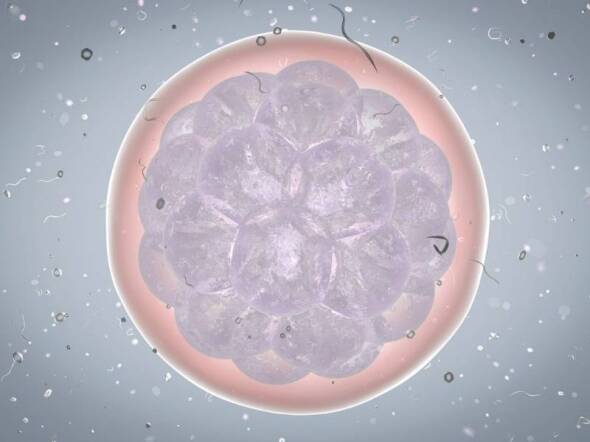What is the normal embryo success rate?
Women who have three chromosomally-normal embryos as a result of In Vitro Fertilization (IVF) have a 94.9% chance of achieving pregnancy, research conducted by Reproductive Medicine Associates (RMA) and presented at the annual meeting of the American Society for Reproductive Medicine (ASRM) shows.
Single Embryo Transfer research study
In a study analyzing 4,515 patients with up to three consecutive Single Embryo Transfers (SET) of chromosomally normal, or euploid, embryos, 94.9% achieved a pregnancy. Implantation rates, or pregnancy rates, were highest for the first transfer of a euploid embryo, at 69.4%. Implantation rates for the second euploid transfer were 59.3%, and for the third, 59.2%.
“These findings are further evidence of just how far IVF has come – that now, women with three normal embryos have a 95% chance of pregnancy,” said Dr. Paul Pirtea, who conducted the retrospective research at RMA’s fertility clinic in Basking Ridge, New Jersey, in 2018.
“While the implantation rates decline minimally with increasing transfers, the fact that they remain high suggests that the 5% of patients who fail to implant after three attempts may largely be victims of simple probabilities and that additional transfers offer hope of a good outcome.”
Dr. Pirtea’s study included patients aged 31-39 who underwent frozen SET between 2012 and 2018.
Struggling to Conceive? This Guide Changes Everything
Discover the expert strategies to finally start your family—download your free guide by Dr. Marcy Maguire now!
Single Embryo Transfer research findings
His findings add further evidence to the fact that aneuploid, or chromosomally abnormal, embryos, which have too few or too many chromosomes, are the leading cause of pregnancy failure and Recurrent Implantation Failure (RIF). With the advent of a reliable genetic test for embryos, such as Pre-Implantation Genetic Testing for Aneuploidy (PGT-A), we can give hopeful parents unparalleled peace of mind.
Improvements in IVF success rates are a result of an entirely new standard of care for the industry that existed even ten years ago. That standard of care, based on SET, allows doctors to dramatically reduce multiple gestation pregnancies and increase the chances of implantation, full-term pregnancy, and delivery of one healthy baby.
“We have come a long way in a concise amount of time in this field,” said RMA founding partner Dr. Paul Bergh, “and we can now tell patients, regardless of age, that with just three normal embryos, they are very likely to achieve pregnancy.”
Should you transfer one embryo or two?
At RMA, we require all of our patients to undergo Single Embryo Transfer (SET), where only a single genetically screened embryo is transferred, resulting in one healthy baby being born at a time. This is in keeping with current guidelines set forth by the American Society of Reproductive Medicine (ASRM), which recommends the transfer of only one high-quality embryo.
Transferring multiple embryos poses legitimate risks to the mother and baby. The significant risk of a twin pregnancy is preterm delivery. Nearly 60% of twins deliver before full term at 37 weeks, and 11% deliver before 32 weeks.
Twin pregnancies involve risks to the fetus, such as respiratory distress, gastrointestinal infections, and even intracranial bleeds requiring longer NICU courses for the infants. There is an increased risk of developmental delay even in deliveries between 32 and 36 weeks (8% vs 4% at term) which is not an infrequent delivery period for twin pregnancies. More substantial neuro-developmental risks are present at earlier gestational ages.
Twin pregnancies also carry a two-fold increased risk of pregnancy, induced hypertension, and increased risk of growth restriction in one or both fetuses. Unfortunately, in twin pregnancies after 20 weeks, there is a 5% chance of loss for one of the twins prior to birth. It also dramatically increases the chance of the delivery occurring via cesarean section if the position of the fetus in the uterus is not optimal at delivery.
Twin pregnancies require patients to consult with high-risk OB doctors, called maternal-fetal medicine physicians. Despite vigilance on the part of the obstetrician and the MFM doctors, these risks are inherent to the twin pregnancy itself. All this being said, for a twin pregnancy that progresses to term, nearly 94% will continue to have a good outcome for both twins through infancy.
The number of normal embryos to implant in an IVF cycle must always be done on a case-by-case basis. There may be situations where the fertility doctor might actually advise the transfer of more than one embryo. Ultimately, how to proceed with an IVF cycle and embryo transfer must take into consideration the clinical situation unique to each couple.
Discovery shows Recurrent Implantation Failure (RIF) is rare; Women with euploid embryos have a high chance of pregnancy.
The study highlights how IVF advances translate into patient success.

